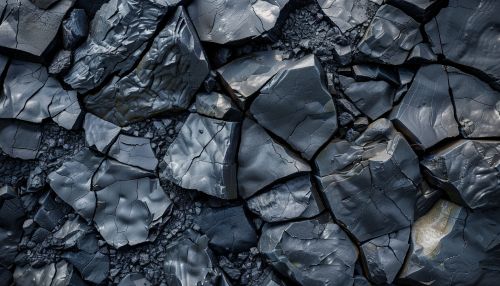Enhanced weathering
Enhanced Weathering
Enhanced weathering is a geoengineering technique that aims to accelerate the natural process of weathering to capture and store atmospheric carbon dioxide (CO₂). This method involves the distribution of finely ground silicate rocks, such as basalt, over land or in the ocean to enhance the chemical reactions that sequester CO₂. Enhanced weathering has garnered attention as a potential strategy to mitigate climate change by reducing the concentration of greenhouse gases in the atmosphere.


Mechanism of Enhanced Weathering
Enhanced weathering relies on the natural process of chemical weathering, where silicate minerals react with CO₂ and water to form bicarbonate ions and dissolved silica. The general chemical reaction can be represented as follows:
\[ \text{CaSiO}_3 + 2\text{CO}_2 + 3\text{H}_2\text{O} \rightarrow \text{Ca}^{2+} + 2\text{HCO}_3^{-} + \text{H}_4\text{SiO}_4 \]
In this reaction, calcium silicate (CaSiO₃) reacts with carbon dioxide and water to produce calcium ions (Ca²⁺), bicarbonate ions (HCO₃⁻), and silicic acid (H₄SiO₄). The bicarbonate ions can be transported to the ocean, where they contribute to long-term carbon sequestration by precipitating as carbonate minerals or being utilized by marine organisms to form shells and skeletons.
Types of Rocks Used
The primary types of rocks used in enhanced weathering are silicate minerals, particularly those rich in calcium and magnesium. Common examples include:
- **Basalt**: A mafic volcanic rock rich in calcium and magnesium silicates.
- **Olivine**: A magnesium iron silicate mineral that weathers rapidly.
- **Serpentine**: A group of minerals composed mainly of magnesium silicate.
These rocks are chosen for their high reactivity and abundance, making them suitable candidates for large-scale weathering projects.
Application Methods
Enhanced weathering can be applied in various environments, each with its own set of advantages and challenges:
- **Terrestrial Application**: Finely ground silicate rocks are spread over agricultural land, forests, or other terrestrial ecosystems. This method leverages the natural processes of soil weathering and plant uptake of nutrients released during weathering.
- **Marine Application**: Silicate minerals are dispersed in the ocean, where they react with seawater to sequester CO₂. This approach can enhance ocean alkalinity and promote the formation of carbonate minerals.
Environmental and Ecological Impacts
The implementation of enhanced weathering has several potential environmental and ecological impacts:
- **Soil Health**: The addition of silicate minerals can improve soil fertility by releasing essential nutrients such as calcium, magnesium, and potassium. This can enhance plant growth and agricultural productivity.
- **Water Chemistry**: In marine environments, enhanced weathering can increase ocean alkalinity, which may help counteract ocean acidification. However, the ecological impacts on marine life and biogeochemical cycles need to be carefully studied.
- **Carbon Sequestration**: Enhanced weathering has the potential to sequester significant amounts of CO₂, contributing to climate change mitigation. The effectiveness of this method depends on factors such as the rate of weathering, the availability of suitable rocks, and the scale of application.
Challenges and Limitations
Despite its potential benefits, enhanced weathering faces several challenges and limitations:
- **Energy and Resource Requirements**: The mining, grinding, and transportation of silicate rocks require substantial energy and resources. The carbon footprint of these activities must be considered when evaluating the overall effectiveness of enhanced weathering.
- **Economic Viability**: The cost of implementing enhanced weathering on a large scale can be significant. Economic incentives and policies may be necessary to make this approach financially viable.
- **Monitoring and Verification**: Accurate monitoring and verification of CO₂ sequestration are crucial for assessing the success of enhanced weathering projects. This requires advanced techniques and robust methodologies to measure changes in carbon fluxes and storage.
Future Research and Development
Ongoing research and development are essential to address the challenges and optimize the effectiveness of enhanced weathering. Key areas of focus include:
- **Reaction Kinetics**: Understanding the kinetics of silicate weathering reactions under different environmental conditions is critical for predicting the rate and extent of CO₂ sequestration.
- **Field Trials**: Large-scale field trials are necessary to evaluate the practical feasibility and environmental impacts of enhanced weathering in real-world settings.
- **Life Cycle Assessment**: Comprehensive life cycle assessments can help quantify the net carbon sequestration potential and environmental footprint of enhanced weathering projects.
